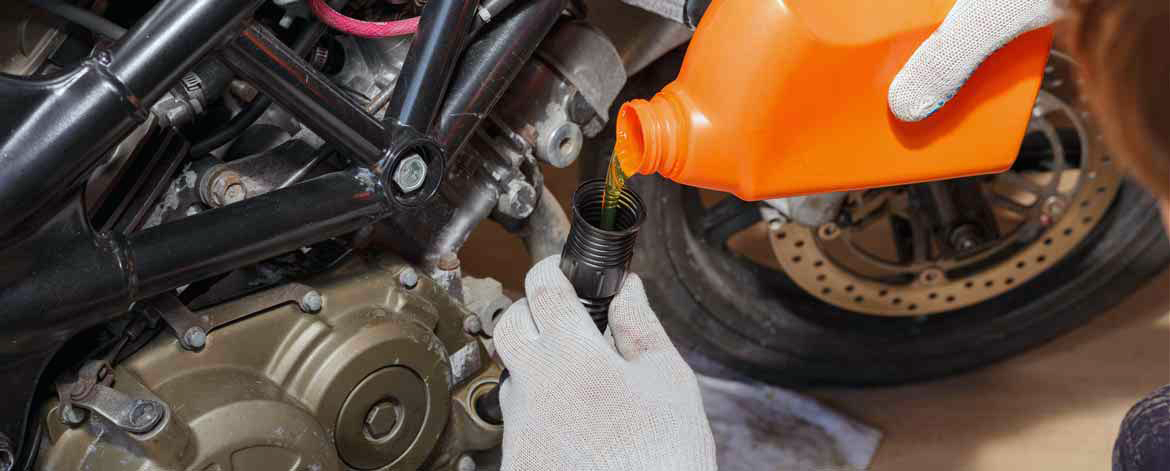
Motorcycle Engine Oil: The Ultimate Guide to Viscosity, Brands, and Avoiding Costly Mistakes
Why This Matters:
Engine oil is your bike’s lifeblood. Choose wrong, and you risk sluggish throttle response, overheating, or a catastrophic engine seizure. This guide covers:
Decoding oil grades (e.g., 10W-40 vs. 20W-50).
Fully Synthetic vs. Mineral Oil: Which is right for you?
The shocking truth about delayed oil changes (with lab-proof).
Top oil brands tested by mechanics.
1. Oil Viscosity Demystified: What Does "10W-40" Really Mean?
The Science of Flow
Viscosity measures an oil’s resistance to flow. The SAE J300 standard (see SAE International) breaks it into two numbers:
First number (e.g., 10W): Flow at cold temps ("W" = winter). Lower numbers mean better cold starts.
Second number (e.g., 40): Flow at operating temps. Higher numbers = thicker protection at high heat.
Real-World Examples
| Viscosity | Best For | Example Bikes |
|---|---|---|
| 5W-30 | Cold climates (<32°F/0°C) | BMW R 1250 GS (Arctic) |
| 10W-40 | Most modern bikes (versatile) | Yamaha MT-07, Honda CBR |
| 20W-50 | Hot climates/air-cooled engines | Harley-Davidson, Ducati |
Pro Tip: Using 20W-50 in freezing temps? Your engine will groan like a tired bear on startup.
2. Synthetic vs. Mineral vs. Semi-Synthetic: Which Should You Buy?
The Oil Type Breakdown
| Type | Pros | Cons | Best For |
|---|---|---|---|
| Mineral Oil | Affordable, eco-friendly | Breaks down faster | Vintage bikes, low-mileage riders |
| Semi-Synthetic | Balances cost/performance | Not for racing | Commuters, mid-range bikes |
| Synthetic Oil | Handles extreme heat, lasts longer | 2-3x more expensive | Performance bikes, track days |
Brand Showdown
Motul 300V (Full Synthetic): The racetrack favorite. Lab tests show 12% less wear vs. generic oils.
Castrol Power1 (Semi-Synthetic): Budget-friendly for daily riders.
Liqui Moly (German Synthetic): Precision-formulated for some BMW/KTM models.
Mechanic’s Verdict: "In our shop, bikes running synthetic oil need 30% fewer top-end rebuilds." — RevZilla Tech Survey
3. The Dirty Truth: What Happens When You Delay Oil Changes?
Lab-Proven Risks
Blackstone Laboratories analyzed 1,000+ used oil samples (see report):
Sludge Alert: Oil older than 5,000 miles had 4x more contaminants, clogging oil passages.
Metal Wear: Overdue oil averaged 90ppm of iron particles (vs. 30ppm in fresh oil).
Power Loss: Dyno tests revealed 8-15% HP drop in engines with degraded oil.
The "Honey Test" (Quick Check)
Fresh oil is golden and translucent. If yours looks like:
Dark maple syrup: Change soon.
Black coffee: Your engine is crying for help.
4. How Often Should You Change Your Oil?
General Rules
| Riding Style | Change Interval | Oil Type |
|---|---|---|
| Daily Commuter | 3,000-5,000 miles | Semi-Synthetic |
| Weekend Warrior | 5,000-7,000 miles | Full Synthetic |
| Track Junkie | Every 1-2 race days | High-Temp Synthetic |
Exception: Short trips? Change every 6 months—condensation degrades oil faster.
5. Choosing the Right Oil: A Step-by-Step Guide
Check Your Manual: Honda CBR600RR? Likely 10W-30. Harley Softail? 20W-50.
Climate Check: Riding in Arizona? Thicker oil (e.g., 20W-50). Alaska? 5W-40.
Brand Trust:
Best Overall: Motul 7100 (balance of price/performance).
Budget Pick: Motul 5000 (great value, top brand semi-synthetic).
Final Verdict
Using the right oil and changing it on time is the cheapest insurance for your bike. Skip corners, and you’ll pay in repairs—or worse, a stranded ride.




